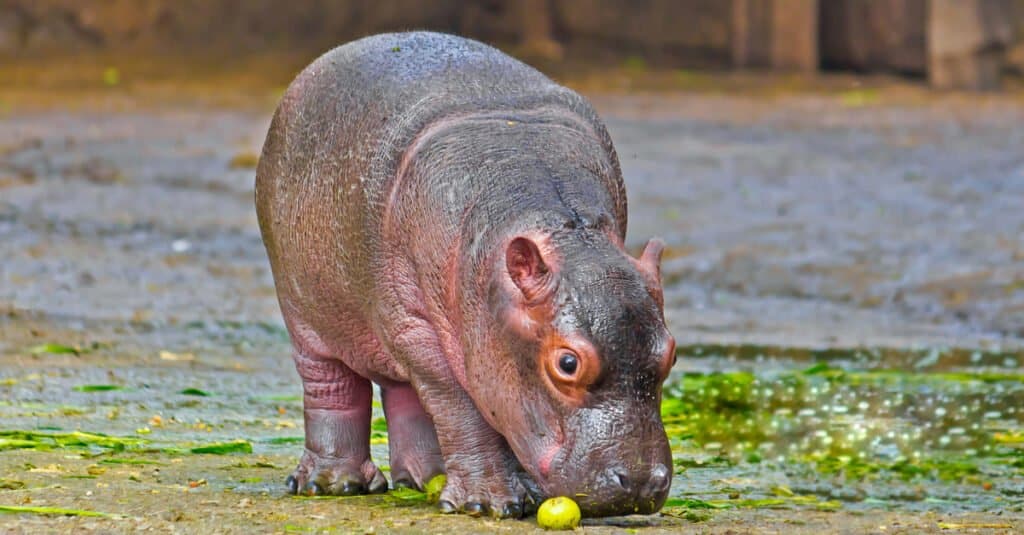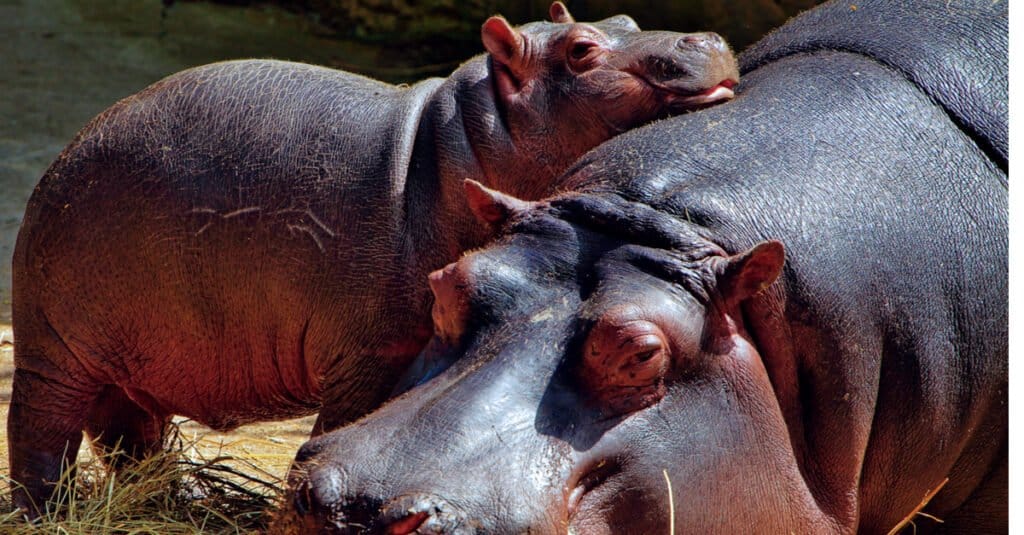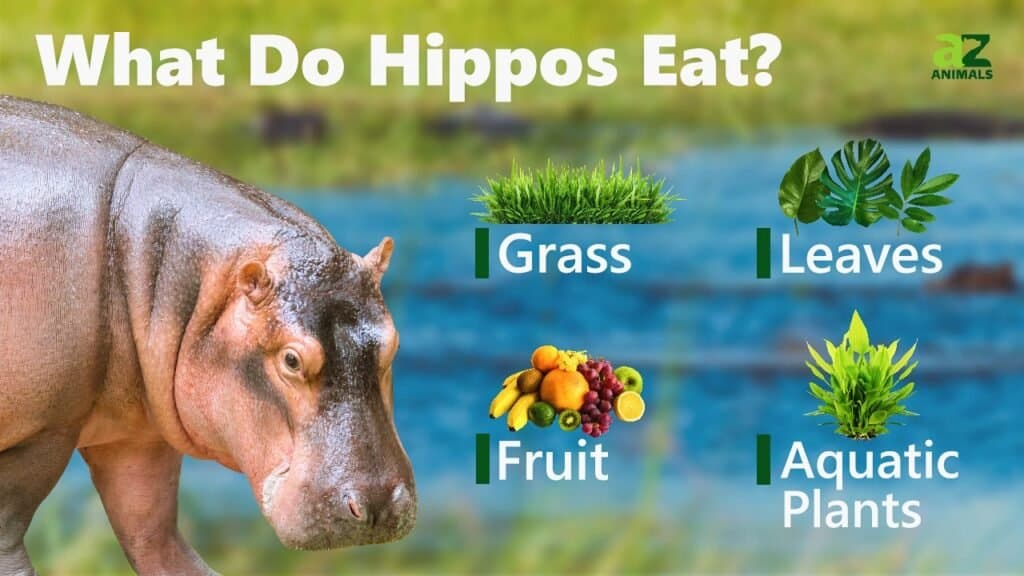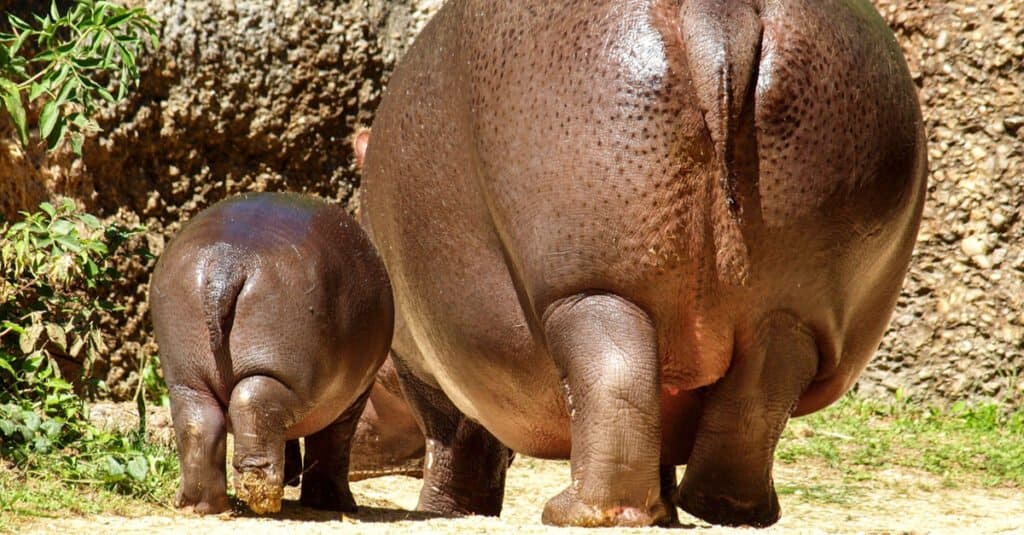Where Do Baby Hippos Grow in the Mother
Baby Hippo: 5 Dogie Pictures & 5 Facts
Published: November 18, 2021
tantrik71/Shutterstock.com
Baby hippos are amidst the largest baby mammals in the world. They're undoubtedly some of the almost adorable semiaquatic animals, but they can be dangerous, too. Read on to observe out five awesome hippo calf facts and to see some seriously adorable pictures!
#1: A Babe Hippo and Baby Tortoise Became All-time Friends!


If we told y'all that an orphaned babe hippo and a 130-yr-old tortoise became best friends, you'd probably think we were crazy, right? Well, it'southward true! On an animate being sanctuary in Kenya, a hippo named Owen was separated from his family after a seismic sea wave ravaged his abode.
The owner of Lafarge Ecosystems heard almost the baby hippo and immediately went to collect the beast. When she brought him back to safety on her sanctuary, he immediately ran to a 130-year-one-time tortoise named Mzee. Surprisingly, the tortoise ended up exchanging signs of affection with Owen.
More Groovy Content:
Previous Next
Mzee and Owen shared their days walking together, going to the pond, and patrolling the sanctuary. This unlikely friendship goes to bear witness only how heartwarming nature can be!
#two: Infant Hippos Counterbalance About 100 Pounds


Since hippos are the third-largest land mammal, backside just elephants and rhinos, you can probably imagine that they have massive babies. In fact, the average baby hippo is born weighing around 100 pounds!
Hippo calves will eventually abound to weigh 3,000 pounds or more than as fully-grown adults. They primarily depend on their mother's milk, which is rich in nutrients and fat, to help them proceeds weight. Since hippos spend much of their time in h2o, calves must nurse underwater. They close their eyes and olfactory organ when feeding to avoid sucking in water while they eat.
In one case they are weaned, they brainstorm to consume grass every bit their main source of food.


This helps go them acclimated to chewing and prepares their digestive system to suspension down solid nutrient. They can eat upwardly to fifty pounds of grass a night as they are growing. Once they are adults, their nutrient interests branch out more than, but grass remains a staple in their nutrition for their unabridged lives.
#3: Infant Hippos Can't Swim


Information technology may come every bit a surprise to you that neither baby hippos nor their parents can swim. You might exist wondering how so, can they spend so much time in the water? The answer is elementary: they use their legs to catapult themselves from the bottom of the h2o.
The best way to describe how hippos can alive in the h2o is that they float around. Even so, since they are so heavy, they can't really float. When it appears that they are floating on the h2o'southward surface, the reality is that they are continuing in a shallow area of the water. This gives the impression of floating but is misleading.
Hippos are also unable to exhale underwater. Babies tin can concord their breath nether the surface for up to a infinitesimal. As they grow to adulthood, that amount of time increases to around five minutes.
#4: Baby Hippo Twins are Extremely Rare


While a hippo pregnancy can issue in twins, it is extremely rare. Mother hippos requite birth to a unmarried babe well-nigh once every two years. It is so unheard of that a female hippo will take multiple babies at one time that only 15 instances take been recorded in the final 100 years.
#v: The Kickoff Hippo Ultrasound was Captured in 2017


Hippos are notoriously territorial animals. When unsuspecting people roam into hippos' territories, the animals are known to go highly aggressive. They are dangerous to humans because their ivory teeth are incredibly abrupt. Their bite strength has also been measured at some ane,800 pounds of force.
These facts brand it evident that it would exist nearly incommunicable to perform an ultrasound on pregnant female hippos. I female person hippo at Cincinnati Zoo, though, allowed zookeepers to take an ultrasound of her babe in 2017. Zookeepers conditioned the animal with her favorite foods to convince her to allow them to perform the process.
The hippo was likewise well-trained at her last zoo and was known for her easy-going personality. These circumstances made the zookeeper's job much more manageable. The result was the outset ultrasound on a hippo pregnancy in history!
FAQs (Oft Asked Questions)
What do baby hippos consume?
Baby hippos are mammals, which ways they primarily survive on their female parent's milk for the offset several months of life. Somewhen, they begin eating grass and venture to small birds and other animals. However, they always eat grass every bit a primary source of nutrient.
What are infant hippos called?
Baby hippos are called calves.
How big are baby hippos?
Calves are born weighing around 50 to 100 pounds and mensurate approximately ii feet long.
More from A-Z Animals
Source: https://a-z-animals.com/blog/baby-hippo-5-facts-5-pictures/
0 Response to "Where Do Baby Hippos Grow in the Mother"
Post a Comment